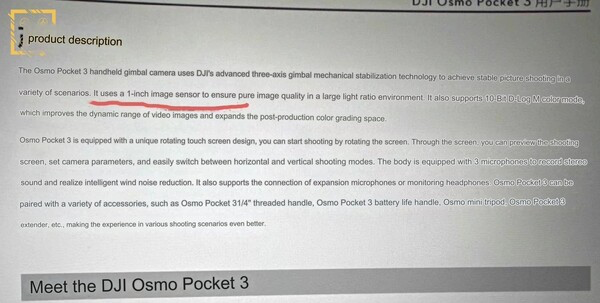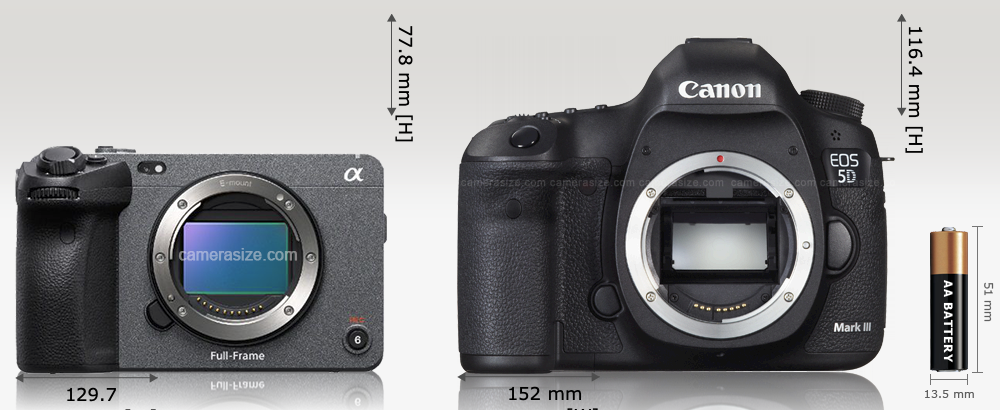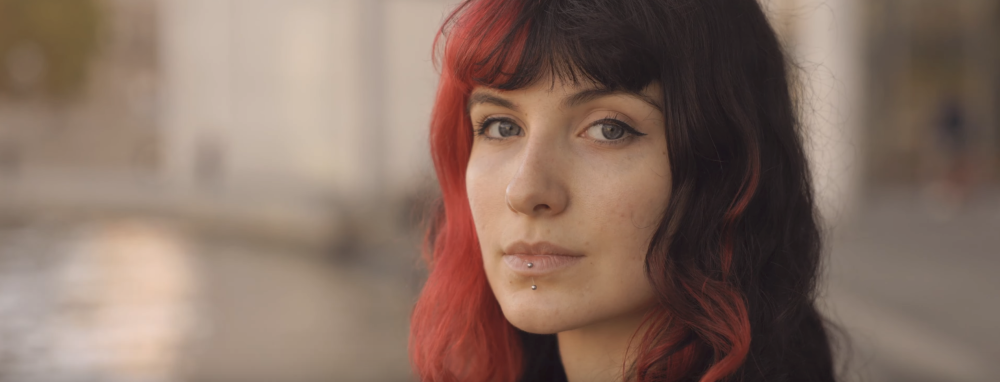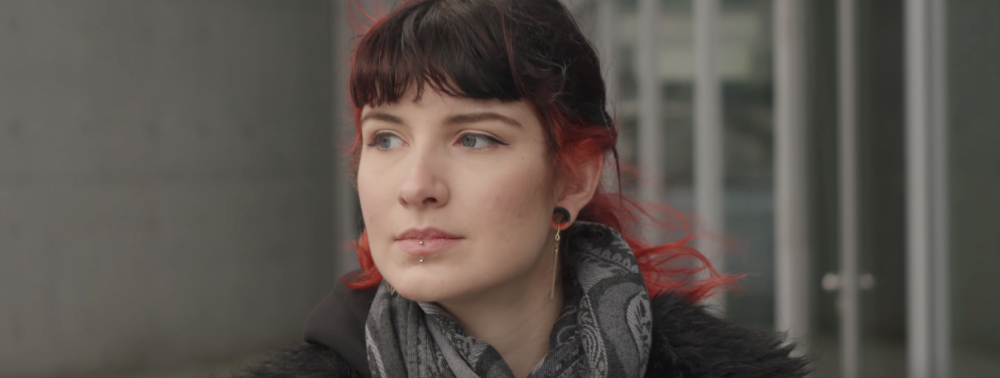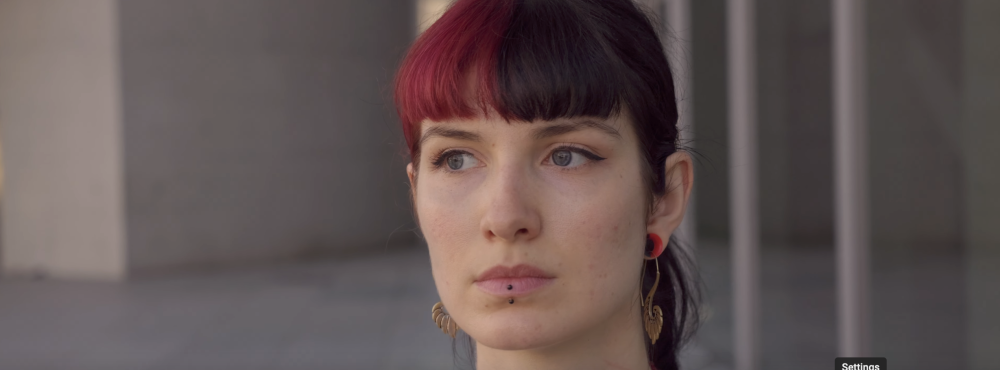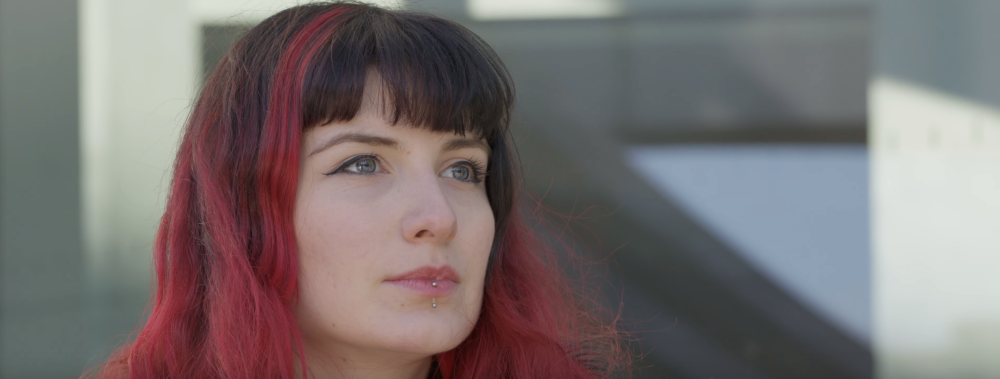-
Posts
7,817 -
Joined
-
Last visited
Content Type
Profiles
Forums
Articles
Everything posted by kye
-
That's how I have come to think about cinema cameras vs hybrids / video cameras - that cinema cameras expect you to work around them and hybrids are designed for the camera to work around you. It makes sense, considering that cinema cameras are designed to be on a controlled set where things are literally worked around the image, whereas hybrids don't expect that at all. There are some overlaps, like cinema cameras starting to have AF and IBIS and other things that help speed things up, but those are exceptions. There are also exceptions like stills cameras that are very manual and are designed for studio settings where everything is controlled, like fashion shoots with a Hassleblad for example. Talking about that guy and his RED, it would be interesting to hear how he is able to ensure he has enough coverage - I'd expect that he probably directs the action more than someone who is able to react faster, and he's probably got a formula for which shots he knows he needs to get. I got a bit of a peek behind the scenes with one of the top wedding photographers here in Perth maybe about 20 years ago (AUD$15K without prints - full package was brand new car territory) and he took the formal shots with the couple and his second shooter took other setups and also more candid shots (kids playing, people laughing, etc), but he took the same compositions in the same venues week after week after week - there was a great place where he could look straight down on a large group and I saw that composition with five different wedding parties in just a single fortnightly order from his printer. He ended up leaving Perth a few years after that and moving overseas because he was just bored because it was so formulaic.
-

Panasonic S5 II (What does Panasonic have up their sleeve?)
kye replied to newfoundmass's topic in Cameras
Well, nothing wrong with that image. The only thing I'd suggest paying attention to is that the Alexa wasn't as sharp as the Panny, but you can soften that in post. Very encouraging!! -
Do photography stores have the FX3 and not FX6 etc? I can understand they don't have the hire-only models, or the super high end stuff, which is order-only even at places like B&H. I definitely agree with you about the number of casual shooters buying Canon 1D series cameras, and 5D before that, and have mentioned it many times here on the forums, but video was always a small percentage of the sales compared to stills photography, and even then if someone has a top-level stills camera from Canon or Nikon or Fuji etc those can all take very good video without needing to get an FX3, which is far from the best choice if you also take stills. Do you really think the high-end video-only consumer market is as large as the high-end stills/hybrid consumer market is?
-
Yes, it's called "being a parent".
-
I have seen BTS videos showing YouTube channels being shot with multiple ARRI Amira cameras. There's a principle in economics that if there are X people who are willing to buy a product / service from you at $Y, there will be X/10 people willing to spend $Y*10 on something from you. This is something that is mostly ignored by the retail market, but occasionally someone actually implements it. The Oxfam shop has gift cards that you give someone as a gift, but the organisation uses the money as a donation. These have been discontinued in the US shop, but the Australian shop has them ranging from $10 up to $300 (for a pack of 7 cards), and then they have one that's $2400-$8100. Rich people often want to show off, so that is for them basically. So yeah, I get that there is a segment of people who want "the best video camera money can buy" and then when they get shown an Alexa 65 fully rigged they realise they want something smaller for one user, and then get shown the FX3. If you can afford a brand new Porsche then you can afford one of these, and Porsche sells a bunch of cars each year. BUT, going back to my original point, which seems to have gotten lost... Even if there are a few rich folks shooting cat videos with it, I still don't think the FX3 at over $4000 (body/batteries/media) or $5000 (with lenses) is a "consumer" camera. I actually don't think the percentage is high enough to even be a "prosumer" camera either, considering the number of professional solo operators who would have one (or three).
-
It depends on what you want to do with it. I think you can use it in basically three ways: Use the more basic tools it provides to manipulate the image Start playing with other colour spaces / gammas, and then use the tools it provides to do things they were never designed to do Program your own custom plugins and adjustments There is also a level "2.5" where you're using the built-in things to basically "build" a module in Resolve. But it's an 80/20 thing - you can go a long way with just the simple tools. It just depends on what you want to accomplish.
-
I'd suggest that the vast majority of professional work is too low budget to have you on set doing sound, so it's a segment of the market hidden from you. For every film set with a professional sound person, there will be 10 or 100 solo videographers shooting weddings or corporate gigs or music videos etc, and something like an FX3 would be a good fit for them. Not a lot of folks doing video for fun and using an FX3, or at least, a tiny percentage compared to the videography industry.
-
If you can learn it, colour grading will set you free. The reason that folks get so caught up in the colour science of one camera or another is because they are trying to buy good colour rather than creating it themselves. Did you know that the Alexa RAW files are very high quality light measurements? All the beauty in the camera comes from having a very accurate sensor, and then applying very pleasing results in post. If you're curious to learn more then just ask. I can give you more links than you could possibly be interested in! Learning Resolve is like making art by attaching a paint brush to the space shuttle and then flying it around. Learning all the controls is a gargantuan task, and then once you can do it you still have to work out what makes a nice picture.... Learning it in a winter would only be possible if the winter was nuclear! You obviously don't mix with the folks who make movies or shoot high-end TV series. There has always been a desire for lenses with less optical perfection than the current state-of-the-art. Lots of modern cinema lens announcements are lens manufacturers re-issuing classic lenses from their history with a modern physical design and electronics that talk to the camera, but promise the same classic look as the original lenses. The Panchro/i Classic FF lenses are an example of this, with Cooke saying this as the first text on their product page: "The famous Speed Panchro lens, re-invented for Full Frame" then.... "In 1935, the Director of Photography of Metro-Goldwyn Mayer studios said, “… at least 50% of our productions are made with Speed Panchros.” A true icon, which first established the optical characteristics that would one day become known as the Cooke Look. Panchro/i Classic FF evolves this further with modern opto-mechanical design." and later... "The same coveted Cooke Look aesthetic as the now legendary Cooke Speed Panchro. Cinematographers talk about Panchro/i Classic as having qualities which enable to convey more emotion in their work, particularly with faces." If everyone wanted the cleanest lenses then this would be a terrible product page! This is typical, and is why there are so many lens tests from cinematographers online - they're choosing a look based on the various imperfections in the lens. There is NO SUCH THING as a cheap Porsche. Repeat it back to me: There is NO SUCH THING as a cheap Porsche! You pay for it when you buy it, or you pay afterwards....... ask me how I know 😂😂😂
-
I knew about these, they just weren't noteworthy. My summary is still accurate. In 2012 there was my GoPro Hero 3 and the iPhone 5, which were broadly comparable. Now in 2023 there is the iPhone 15 which includes 3 cameras, one of which has an 8K sensor, it records Prores HQ to SSD, the log profile has a white paper and associated colour management profiles in ACES etc.... plus, it's a telephone, music player, video player, computer game console, portable computer, internet connection, etc etc etc. If you want to talk about being informed then it might interest you to know that Sony cinema cameras can all record RAW externally, as well as a plethora of different compression options and profiles internally, which seems like world-class control over such things, instead of the GoPro which offers very few codecs, no RAW, and the colour profiles aren't supported by industry colour management frameworks. I'm not saying that GoPro haven't done anything, I'm just saying that apart from adding their stabilisation (which was very impressive at the time) their upgrades have been incremental at best.
-
The BMCC 2.5K was $3K in 2012 does equate to being about the same as the FX3 now, including inflation, so that seems a good comparison although it quickly went down to $2K within a year. Of course, they followed it up with the P2K a year or so later, which was one third the cost(!) and apart from being slightly lower in resolution was light-years ahead in basically every other way. To continue the comparison, the BMCC was 2.5K to oversample for 2K/1080p delivery and apparently they collaborated with Arri to deliver ARRI PL-mount kits of it(!) so that's all very "professional". The P2K was much more lower-end in comparison (auto-focus, consumer mount, pocketable, consumer batteries, consumer media, etc), so in this comparison the P2K is the prosumer camera and the BMCC is the completely professional one.
-
A few thoughts... If you are using the IBIS on the camera, an electronic lens that tells the camera the current focal length is hugely useful - this is one of the reasons I'm swapping to electronic lenses from manual zooms. Cheap zoom lenses tend to have similar optical aberrations to classic vintage lenses, especially if you add some filters as has been suggested above and I definitely agree with. Cheap often means variable aperture, but if you don't need the speed then stopping down to F4 or F5.6 will make most zooms a constant aperture. Try the deeper DoF look if you aren't used to shooting with it, most feature films have deeper DoF most of the time but internet people seem to be both blind and in denial about this for some reason which completely eludes me. Also, remember you can distress the image in post. This gives the advantage that you can adjust the amount per shot. If you shoot with anything even hinting at vintage then you'll be amazed at how variable the look can be - one shot looks completely clean and the next moment the sun comes out or you change the composition slightly and the image is a wash of flare. If you're not sure about what is possible in post, just think of all those action blockbuster films that have a super-heavy anamorphic look to them and then realise that all the VFX work starts out being infinitely sharp and they were able to degrade to perfectly match everything else on a huge cinema screen. Adding a bit of glow, blurring and vignette in post is super-simple and gets the job done.
-
Completely agree on both points. I owned the Hero 3 Black, and used it as my waterproof camera to compliment my GF3. I used it with the battery back for recording underwater, for snorkelling trips, for swimming with the kids, and for photos when it was raining. It was actually a pretty good photo camera - I shot with no screen and set it to burst mode and would pan the camera and then select the photo with the right composition. Great for street photography in this mode. Anyway, after having it just stop working almost every time I recorded with it, I just adopted the habit of pulling the battery every time I got out of the water. If I needed a new battery I'd swap it, if not I'd just pull it apart and wait 20s then put it back in again. That sorted it out - most of the time anyway. The frustrating thing is that if you notice it's stopped recording and you're snorkelling 500m from the shore, good luck trying to reset it... back to the beach you're swimming! Also agree that they didn't really know what to do in terms of the brands strategy. They might have had some idea when they went down the path of having that drone that could use your GoPro on it. The idea of buying a camera module and then mounting it to everything was a good one, but they just couldn't deliver, so got eaten alive by DJI. I absolutely and completely disagree. The Hero 3 Black, which I owned, was an action camera that: shot various combinations of resolution and frame rates had wifi control and preview had software tools that weren't really that innovative was buggy to the point of it being disruptive to shoot with Over the course of the last decade the product went from the above to a camera that: shot various combinations of resolution and frame rates had excellent stabilisation (new!) had a mode that un-fish-eyed the image (new!) had wifi control and preview had software tools that weren't really that innovative overheats unnecessarily compared to other cameras In over a decade, that's not innovation. I watched each year as the new models came out to see if I would upgrade mine. I really liked the form factor and entire concept because it complemented the rest of my setup so well. Spoiler: I ended up buying the Sony X3000 in 2019 because it had physical stabilisation instead of digital stabilisation, which works in low-light when the shutter speeds get longer and motion blur becomes a thing. The parallel example is what smartphone manufacturers have done with smartphone cameras, and those have changed a huge amount during the last decade.
-
Of course! With kids, you just hand over your wallet and try not to think about it.
-
-
I guess it's relative, but it seems like a ridiculous amount of money to me for a camera-body only. If you're going to use it professionally then sure, but for anything other than that, it's hugely expensive. By the time that you're adding in lenses to use with it, assuming you're using the AF and other fancy features that it has, it's starting to get ridiculous compared to other non-professional cameras. Now, I'm not saying that other much cheaper non-professional cameras are just as good as the FX3, because they're missing things like external 16-bit RAW and people don't shoot feature films on them, etc.. but these aren't things that are really relevant to most non-professional users. I see all these threads about these RAW shooting, FF, 6K or 8K cameras that body-only cost the same price as a reliable second-hand car, and I just think people here have lost touch with consumers. I paid about USD$1600 for my XC10 and about the same for my GH5, obviously these were some time ago now, but those were serious amounts of money for a camera in my eyes, despite being on the camera forums, and it was more money than almost anyone I knew would even think about spending on a whole camera setup, let alone a body-only!
-
Of course not! We judge them purely by megapixels and dynamic range. Every other consideration is irrelevant to us, as artists and creative people. 😂😂😂 Is it the most taxing mode? It is the mode with the most resolution to compress, but other modes have the burden of downsampling, which this one wouldn't have. I'm not sure which would be more strenuous. I've recently experimented with running Resolve in 720p (applying various blurs and colour processes at this resolution) and then exporting to 1080p via an up-sampling process from the 720p timeline. It surprised me, but having the timeline in 720p (with less than half the total pixels) and upsampling the result was dramatically slower than just doing all the processing to a 1080p timeline and not doing any upsampling on export. Both were compressing the 1080p file of course, so no differences there. I didn't realise that image rescaling was more computationally demanding than processing the higher resolution natively.
-
Finished it. I'm assuming that everyone else liked the post, saw it was 300 pages, then went back to scrolling social media about new cameras? It wasn't quite as useful as I was hoping, but then again I had a specific agenda when reading it, so that's my fault not theirs. Now I have to get back to work and actually test various things.
-
How'd you go with the other ones? Did the FX3 stand out as vastly superior to the others?
-
Do you think the FX3 is a consumer camera?
-
That's one of the best yet - until the DR was just overwhelmed of course. Nice find!
-
@gt3rs - what do you think of the above video from @SRV1981 with the diffusion filter? I thought the images looked pretty good with fine skin-tones (up until the DR of the camera failed and it went bizarrely saturated and then clipped). The model has impeccable skin though, so it's hard to tell as there didn't seem to be fine chroma detail in her face.
-

SJCAM SJ20 Dual Lens Action Camera to be Released Soon...
kye replied to powerman668's topic in Cameras
The only remotely solid thing that google has is this: https://competition.adesignaward.com/design.php?ID=145503 Which appears to be a design competition entry.... -
So, is anyone reading it yet? I'm up to chapter 11 and enjoying it, although I'm only skimming the technical parts.
-
To be honest, the whole thing of this movie getting all this hype for being shot on an FX3 seems ridiculous. I think on paper it sounds like this is an incredible thing where a big budget movie shot on a tiny cheap camera, which is the kind of story that makes people who can only shoot on tiny cheap cameras feel better, but it's not true. Even if you have a tiny cheap camera, you don't have $72M to spend in post... .....and if you had $72M in post, you could have shot it on an EOS M using Magic Lantern and it would have looked almost as good (professional colourists and VFX artists are incredible - high-end work looks great mostly because of those, not the camera that was used). The image isn't really that much better than other things I mean, can you tell which of these below is the FX3, or the Venice 2, or the G9ii, or the R6ii, or the GH6? It should be obvious right - the Venice 2 is something like $50K, and the G9ii and GH6 are consumer MFT cameras, and the FX3 should be easily identifiable, right? The FX3 isn't really that small You might be thinking the FX3 is small because it's smaller than a 5D, for example: But that's not what it looks like, this is what it looks like: It's not that cheap So you want external RAW - sure. The Fujifilm X-S20 does Prores RAW, and it's $1299 - which is a third of the cost! Oh, you want 16-bit RAW, not that crappy 12-bit RAW that the Fuji shoots. Let me ask you this - have you ever seen the difference? Have you graded it? I didn't think so. If I showed you a 12-bit RAW video graded by a professional colourist or 16-bit RAW video you shot and graded yourself, which would be better? Maybe you should shoot your movie (or cat video) on the Fuji and pay a professional colourist to grade it - it would look better.... It's a marketing stunt.
-
Yeah, sounds to me like marketing spin, where you say something that's technically correct (so if anyone asks you have an answer) but not relevant in any practical sense. For example the FX6 gets a lot heavier when you mount a screen etc, that the FX3 already has, but they shot in RAW on an Atomos, so the FX3 would never have been used without the screen anyway...




